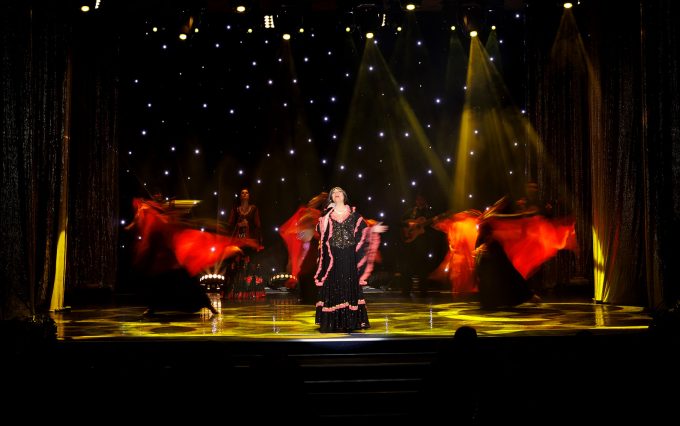
31st May 2022
Non-Fiction
9 minutes read
Gypsy Heroes
translated by Thomas Cooper

31st May 2022
9 minutes read
Or a short history of the first collection of dramas by Roma authors
When someone asks me what a Gypsy is, I see people in front of me. Men, women, children, elderly people. I never thought of anything else. No images of abject poverty come to mind or stereotypes about Gypsy musicians, not even the notion of the Gypsy people. I just think of ordinary people.
And that has not changed a bit over the years. To this day, I am genuinely surprised when I am asked to say something about the Roma, especially the Hungarian Roma. If I look in the mirror, I don’t see anything unusual: a middle-aged man looking back at me. Others, of course, can tell by looking at me that I am a Gypsy.
In Central Europe, everyday racism is a bit different from everyday racism in the United States. After the Holocaust, which affected the Jews and Gypsies of Europe in much the same way, violence by the armed forces against Roma is not commonplace.
The peoples of Central Europe have a different kind of racism. I will offer an example: 20 years ago, a job advertisement for an actor was posted in a theater in rural Hungary.
The theater has been my life.
When I first went for tryouts, I was a total beginner. We were in the final round of auditions when it became clear that I wasn’t going to get the role. “We’ve already got one of you,” they said, because they already had a Roma actor in the company. They didn’t completely destroy my naivety, of course, but it did become clear to me that if I didn’t want to be a character actor, if I didn’t want to play stereotypical Gypsy roles, I would have to move on.
“Let’s make Gypsy theater!”
This mantra was born a bit more than two decades ago. We’ll use drama pedagogy, we’ll have scholarships, we’ll teach Roma children, and of course we’ll act! A whole generation of Roma artists has performed in our theater. Today, if you meet a Hungarian Gypsy intellectual in Brussels, New York, or anywhere in the world, chances are that he or she grew up in our theater and knows us.
Of course, we were not the first people to come up with the idea of Gypsy theater. In Russia, there is a tradition of Gypsy theater that now dates back centuries: Roma perform for non-Roma, and always to a full house. Of course, politics also plays a role in the fact that the tickets sell out. From Stalin to Putin, the Russian politics of ethnic integration has always supported Roma culture. You can still see this on the map today. There’s a Roma theatre in Kiev too; it’s only in Central and Western Europe that politicians have refused to maintain theaters that consist entirely of Roma. I’d rather not go into the reasons for this.
The Roma, originally a nomadic people who settled some two hundred years ago, have always been on the periphery of Central European societies. With the exception of the racist horrors of the Second World War, conflicts between Roma and non-Roma have always flared up at times of economic crisis. The Hungarian peasant was most likely to get angry with the Gypsy when for some reason he didn’t have any money either.
Let’s return, however, to the Roma theater. Over the past 20 years, we have nurtured generations of talented Roma and non-Roma (because I think it is poverty that links social groups in Europe, not skin color). We have performed a staggering array of works, and so have they, from classics to contemporary plays. We have reflected on serious social issues and wars. We have worked with a very large repertoire.
We didn’t really deal with the Roma issue as an artistic problem. We treated it instead primarily as a social issue. The Roma are an integral and inseparable part of Central European societies. In my view, there should not be a separate Roma culture. This culture, rather, should coexist with the culture of the nations of the region.
However, stereotypical depictions of Roma in the media, the arts, and all spheres of life have not changed much in the majority societies.
Federico García Lorca’s Gypsies are the real gypsies.
Gypsies play Gypsies in the theater.
“What is the problem with Roma identity in the arts?” I asked myself. “What is missing in contemporary theater that we have in the world of culture, for example in music? Roma left a strong mark on national cultures from the very beginning in any branch of music, from classical to pop. Why have they failed to integrate in other branches of the arts, such as literature or theater?
I have been brooding over this for weeks. I’ve thought about it on the tram, I’ve thought about it during drama pedagogy classes, and during rehearsals. I pestered all my friends in the arts with this question, both Roma and non-Roma. It was even a topic of conversation at home with my partner.
I finally came to the conclusion that, unlike in the case of music, there are no Roma heroes in the theater.
A dramatic work about Roma is as rare as a white raven, and there are no works for the stage written by Roma.
My answer did not reassure me. It seemed unimaginable that there were no Roma playwrights. True, music is the priority for Roma who are turning to the arts. The Roma music dynasties that have existed for generations ensure this. The situation is different for writers, especially playwrights. Gypsies rarely don the cap of the actor, much less of a writer. And the exception definitely proves the rule.
We did a little research. First in Hungary, then including Roma arts organizations all over Europe. It took years of work to look through the jumbles of notes to see if there were any dramas written by Roma with Roma heroes. Roma culture is oral, not written.
It’s hardly surprising that we didn’t find much. Our relationships, however, have grown deeper, and friendships have been forged. But we had to face facts: there are no collections of plays by and about Roma. And there are no contemporary plays by Roma at all.
From there, the next clear step was to collect plays by living Roma authors, plays about Roma. “Let there be Roma heroes at long last,” we thought.
But that’s when the real problems began. We had to ask ourselves what we even meant by Gypsy, and this time not just in the artistic sense. If we want to collect dramas written by Gypsy authors, we have no choice but to define what we mean by Gypsy.
Gypsies have their own language.
But this made our task more difficult, not easier. Romani is a collective noun. It has fourteen or so living dialects, which have developed separately. Even if you speak one dialect, you will not necessarily understand another. And that’s not to mention the Roma who do not speak Romani, but whose mother tongue is the language of the nation of which they are members and who at most use only words and expressions from Romani. Can we exclude from our selection someone whose physical features (darker skin, etc.) prompt members of the majority society to assume he or she is a Gypsy, someone who considers him or herself Gypsy? Can we exclude the so-called Travellers in the United Kingdom who are proud of their Gypsy identities but whose skin is snow-white?
We pondered the question at length, and in the end, we decided to include anyone who identifies as a Roma and writes a drama about Roma in the forthcoming drama book.
The fact that no one has ever had even the slightest thing to gain from identifying as Roma played a huge role in this decision. Unlike the indigenous peoples of the United States, for example, not a single “gádzsó,” or non-Gypsy, ever saw identifying as a Gypsy as a potential business opportunity.
Once we had established the criteria, a volume of monodramas was quickly put together representing all the larger Roma communities, including the Travellers. Getting the manuscripts was something of an adventure, but we also had authors who wrote their first dramas in response to our invitation.
As we compiled the book, we also put together pedagogical materials for universities, advertised the premieres, and invited the authors to attend.
We were ready for anything, except for what happened.
Roma-related art projects, including projects involving music, are met with a general lack of interest by the mainstream media. The media outlets rarely report on the events, and we were quite prepared to be largely ignored. The authors who had been invited presented their monodramas, and we held a workshop. All of a sudden, the media started to show an interest in the book. News of the first book of Gypsy dramas was first reported in Hungary, and then the articles started to appear in other European Union countries. The book was translated into English.
We argued a great deal about why, unlike our other projects, the collection had been so successful. Many people said it was because it is the first contemporary Gypsy drama book in the world in which the heroes are also Gypsies. I have a different theory. Most of our authors are women. They spoke very candidly about their lives, and they wrote monodramas about them. I think the non-Gypsy women journalists saw in these Gypsy women writers not what made them different, but what they had in common. I think that played a part.
Since the publication of Gypsy Heroes, we have already published a new collection. It consists of chamber pieces. We have enjoyed mostly positive feedback and a great deal of enthusiasm.
Though not everywhere. I was in Spain a few years ago talking to Roma artists and cultural managers. Some of them said that we shouldn’t share our culture because the majority will appropriate it.
I disagree. Culture is not a loaf of bread of which there is less if someone takes a slice of it.
“That would be the goal,” I replied. “Let everyone adopt it.






